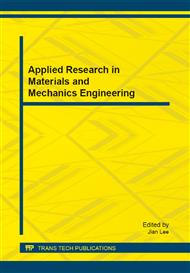p.3
p.7
p.13
p.19
p.24
p.30
p.35
p.39
Properties of Lime Plasters with Different Ceramic Powder Dosage
Abstract:
Several lime-based plasters with fine ground brick content are studied in this article. In the first plaster the ceramics was used as lime substitute while in the second one it was dosed as replacement of the silica sand, the substitution levels being 20% and 50%. Pure lime plaster was use as a reference. Experimental methods and results of measuring basic physical properties, pore characterization, mechanical properties and liquid water transport are described. The plasters with fine ground brick were characterized by improved material’s properties in a comparison with pure lime plaster.
Info:
Periodical:
Pages:
19-23
Citation:
Online since:
August 2014
Price:
Сopyright:
© 2014 Trans Tech Publications Ltd. All Rights Reserved
Share:
Citation:


